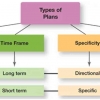In the process of learning in English language, many students find it difficult because they do not believe in using a foreign language. These conditions require a teacher to be able to use the right concept or theory so that students can develop their language skills. Especially in the condition of the COVID-19 pandemic which resulted in the entire learning process being carried out online. This adds to the difficulty of teachers in evaluating students' abilities, and many students who study online are actually more passive during the learning process. This is a serious obstacle to the development of foreign languages for students. However, learning must continue and evaluation of student learning must be carried out.
Here is strategy for teachers to be able to evaluate students' abilities is to use the Monitor Hypothesis, where the teacher directly monitors student progress by comparing previous student learning outcomes with the current learning process. The Monitor Hypothesis is one of five hypotheses developed by the linguist Stephen Krashen are: (1) The Acquisition-Learning hypothesis, (2) The Monitor Hypothesis, (3) The Natural Order Hypothesis, (4) The Input Hypothesis, (5) The Affective Filter Hypothesis. The monitor hypothesis asserts that a learner's learned system acts as a monitor to what they are producing. However, in the online learning process it is not in detail that a teacher can monitor student progress. This condition can be anticipated by interacting directly through online learning by using certain topics or discussions related to a second language.
Stephen Krashen in his theory proposed the input hypothesis of a second language acquisition, the monitor hypothesis describes a way to communicate with a monitor which correct the form we apply the knowledge of a new language, it helps us to produce speeches as if we could use note mother tongue and second language almost at the same level, this monitor internally works scanning for errors before we complete an utterance, this is a function of conscious language learning and not language acquired. Krashen suggests that there is individual variation among language learners with respect to the use of 'monitor'. He distinguishes students who use the 'monitor' all the time (over-user); students who have not learned or who choose not to use their conscious knowledge (under-users); and students who use 'monitors' appropriately (optimal users). An evaluation of the person's psychological profile can help determine which group they belong to. Usually extroverts are under-users, whereas introverts and perfectionists are over-users. Lack of self-confidence is often associated with excessive use of the "monitor".
Krashen and other SLA specialists (Krashen and Terrell 1983; Littlewood, 1984; Ellis, 1985) state that each student has a different way of developing their skills including learning and acquisition. The learning referred to in this concept is the ideas of the process of their awareness of the language (structure). While Acquisition, a language process that is more similar to the mother tongue and which represents the subconscious activity when internalizing a new language. In the concept of acquisition, it is more about the message (meaning) than the form or linguistic structure. As an Second Language teacher it will always be a challenge to strike a balance between encouraging accuracy and fluency in your students. This balance will depend on numerous variables including the language level of the students, the context of language use and the personal goals of each student.
Kreshen explained the strategy for internal monitoring are: know the rule, be focused on the rule, and have time to apply the rule. This condition usually occurs during in-class tests where each student focuses on certain grammatical aspects and then students forget about it when outside the classroom. This makes the development of language skills difficult to achieve. The application of the monitor hypothesis in the implementation of online learning can be done by interacting directly between students and teachers. However, with the monitor hypothesis, students can learn aspects of grammar that can be used at certain times. During teaching and learning process, the teacher can evaluate their language development by paying attention to the language structure or the acquisition process when they speak. This monitor hypothesis prioritizes the teacher's attention on the process of students' language skills.
Refferences
Ellis, R. (1985). Understanding second language acquisition. Oxford: Oxford University Press.
Krashen, S. (1981). Second Language Acquisition and Second Language Learning. Oxford: Pergamon Press.
Krashen, S. (1982). Principles and Practice in Second Language Acquisition. Oxford: Pergamon Press.
Krashen, S. (1985). The Input Hypothesis. Harlow: Longman.
Krashen, S. (1997). The Comprehension Hypothesis: Recent Evidence. English Teachers' Journal, 51, 17-29. Retrieved from: http://cms.education.gov.il/EducationCMS/Units/Mazkirut_Pedagogit/English/Publications/ETJFocusonProjects/










